Canon EF 35mm f/2 IS USM Review
Dustin Abbott
March 31st, 2014
A Canon Underdog?
I have a soft spot for underdogs. That probably serves me well, as I often review Tamron and Rokinon products, and these are manufacturers that are long time underdogs. So as I hold this beautifully made Canon in my hand, why does it seem like once again I am reviewing an underdog?
Sigma, that’s why! Specifically, the launch of the new Art Series and Sigma’s new “Global Vision”. The Sigma 35mm f/1.4 DG HSM Lens immediately seduced photographers with its slick, Zeiss-like appearance and excellent sharpness. It undercuts the Canon EF 35mm f/1.4L USM Lens in price by a significant margin, and the improved sharpness from the Sigma caused even some 35L users to make the switch. The Sigma was a press darling, and I too felt that it very possibly was the next addition to my kit. Just shortly after the Sigma, Canon also released a new lens, the Canon EF 35mm f/2 IS USM It was an update to a decades-old tiny prime, the EF 35mm f/2, but the new lens promised a superior optical formula, Image Stabilization, and an upgraded focusing motor. Canon had recently done a refresh to the 24mm and 28mm f/2.8 primes, and those lenses had been roundly praised for excellent optics and IS, but were considered to have been priced a little high (somewhat of a theme with Canon in the past several years). The lens was no different, with a price only $50 less than the Sigma ($849 USD). It launched to minimal fanfare, while the Sigma has been discussed ad nauseum and has almost certainly outsold it by a wide margin.
So why did I end up buying the Canon to add to my kit?
First, a word on the Sigma. As I have already said, I was pumped for the Sigma. I actually owned the EF 35mm f/2 (I am borrowing it back for comparison purposes in this review) and liked it despite its many flaws. But the Sigma is a sexy looking beast, and that sharpness was appealing (not to mention the [near] extra stop of light). I had been eying the 35L as a companion to my other fast primes (most notably the 135mm f/2L), so the potential of a better lens at price hundreds of dollars cheaper was very appealing. The S35 (Sigma 35) tests really well. It is very sharp. Much sharper in fact that the 35L. I know of many happy users of the lens. But one of the things I do besides reading reviews when I am doing research before purchasing is to look at pictures taken WITH the lens. I realize that there will always be a very wide disparity in the quality of photos because of the skill level of the photographer. But after a while you start to get a sense of how the lens performs in a variety of situations.
Lenses are more than the sum of their parts or even review scores, and I find that particularly true with fast prime lenses. The 35L, for example, produces images with a frequently beautiful “feel” to them that goes beyond technical merit. The images frequently look “pro” or “magic” (and that’s a good thing!) I kept waiting for the WOW images from the Sigma…but I rarely saw them. The Sigma just seems more clinical. It tests very well, but for one thing (and this is huge with a wide aperture prime), the bokeh (out of focus region) never impressed me. The transition to the defocused area lacks that incredible creaminess that the best lenses produce. In short, I just haven’t seen the “magic” I was looking for. The Sigma is also quite a large lens. It isn’t as large as my Tamron 24-70 VC, for example, but it isn’t significantly smaller, either. It wouldn’t be a lens that you would just throw into the bag as an extra.
My ardor for it was waning.
The final straw came when Sigma’s old nemesis began popping up – AF accuracy. Some people had focus issues early on, and others have found that their lens focused great…initially, and then it seemed as if AF accuracy began to decrease. In all fairness to Sigma, I doubt that the reports are quite as dire as they seem, and some people that I trust (like Roger Cicala at LensRentals) have reported that the Sigma seems improved in regards to focus reliability. Still, having owned a Sigma with such issues before (the 50-150mm f/2.8), I wasn’t really interested in going down that path again.
Meanwhile, I read the reviews on the net of the new Canon prime. There are still relatively few of them out there (which tells me the buzz hasn’t been all that high on the lens). The “modern science” of a Google search on the Canon vs. the Sigma shows basically a 2:1 margin for hits on the Sigma, and many of the Canon top returns are actually reviews of the OLDER 35mm f/2 lens.
Price Drop
Despite the relatively few reviews, they were universally very good. The lens was an improvement in every way over its predecessor and (quietly) was also sharper than the 35L. The single knock on it was price. At an early list of $849, it was high. Too high. The Sigma was only $50 more, and included both a padded case and the lens hood. The Canon (in typical miserly fashion), included neither. The killer app for the Canon was the inclusion of a very good IS system (more on that later), but many people questioned how necessary a stabilizer was on a wide aperture, wide angle prime. Videographers were excited, of course, because IS makes a huge difference when shooting handheld video. The Canon was smaller, nearly as sharp, and had better bokeh, but the Sigma featured a larger aperture (f/1.4) and seemed to be a little more professional grade. The Sigma sold well; the Canon…well…not so much. I was interested in the Canon, but thought the price too high. I did continue to see pictures from it, and in the hands of the right photographer I could see some of that magic I wanted. I couldn’t let it go entirely…but wasn’t ready to drop that amount of money on the lens.
Then one day Canon woke up and realized they were asking too much.
The price began to drop…quickly. A promotion going into the 2013 Christmas season saw the price hit $549, and that’s when my antennae went up again. Three hundred dollars off and the lens became a whole different value proposition. I started looking seriously at the lens again and made the choice in December of 2013 to take the plunge. Man, am I ever glad I did!
The Vital Statistics
- Looks great on the camera
- Not the smallest…far from the biggest
- Subtly contoured design
- Stabilizer Switch
- Nicely ribbed focus ring.
The Canon EF 35mm f/2 IS USM is the kind of lens that photographers like to stick on their cameras. It is not a large lens, but has that thick and stubby “prime” design that looks so stinkin’ great on a camera. If you are familiar with the Canon EF 100mm f/2.8L Macro IS USM Lens lens, then you have a pretty good idea of the construction of the 35mm f/2 IS (from henceforth known as 35IS). It is made of engineered plastics, but in no way feels “plasticky”. It feels dense and solid, and has an identical texture to the 100L. There is really only two differences: the 100L has both a rubber gasket for weather sealing and a red ring. Everything else feels the same. The switches feel the same, the focus ring has a similar texture, and the overall feel of the lens in your hand is very similar. The lens feels great. It is internally focusing (the length always stays the same), has a metal bayonet mount, and the front element does not rotate at all (good for using polarizing filters). Because it is an internally focusing fixed length lens there should be few opportunities for moisture or dust to penetrate the lens despite it not being officially weather sealed. There is really nothing to complain about, other than the decision to not include the rubber gasket to improve sealing (Canon has not included this feature on any non-L lens). The three recent non-L primes (24mm, 28mm, 35mm) are so well made that many were surprised that they weren’t added to the L series.
One nice upgrade is that the lens features Canon’s new center-pinch cap – a vast improvement over the older design.
The lens is reasonably compact, but is definitely not nearly as small as the lens it replaces. It grows 4.4 ounces/125 grams (from 7.4/210 to 11.8/335) and is 3.1”x 2.5” (77.9 x 62.6mm) in length compared to 2.6” x 1.7” (67 x 43mm) for the older 35mm f/2. The filter size also grew from 52mm to 67mm. For comparison sake, the Sigma weighs 23.5/665 (twice as much) and is 3.7” x 3” (94 x 77 mm) – approximately a third longer. That means the Sigma weighs only about 5 oz. less than my Tamron SP 24-70mm f/2.8 DI VC USD Lens and is less than an inch shorter. That was my problem – the Sigma is closer in size to my standard (f/2.8) zoom than it is to my smaller primes! The Canon, however, strikes a much better balance. It isn’t small enough to throw into a pocket like its predecessor, but it is small enough to put in a small space in a camera bag and take it along.
To give you some size perspective, here is the “line-up”. You can see that the new 35mm is substantially larger than it’s predecessor (and the other two “pancake” lenses that represent the most compact lenses available for a Canon system), but is still dwarfed by a standard zoom. The Sigma is much closer in size to the Tamron zoom than it is to the EF 35IS.
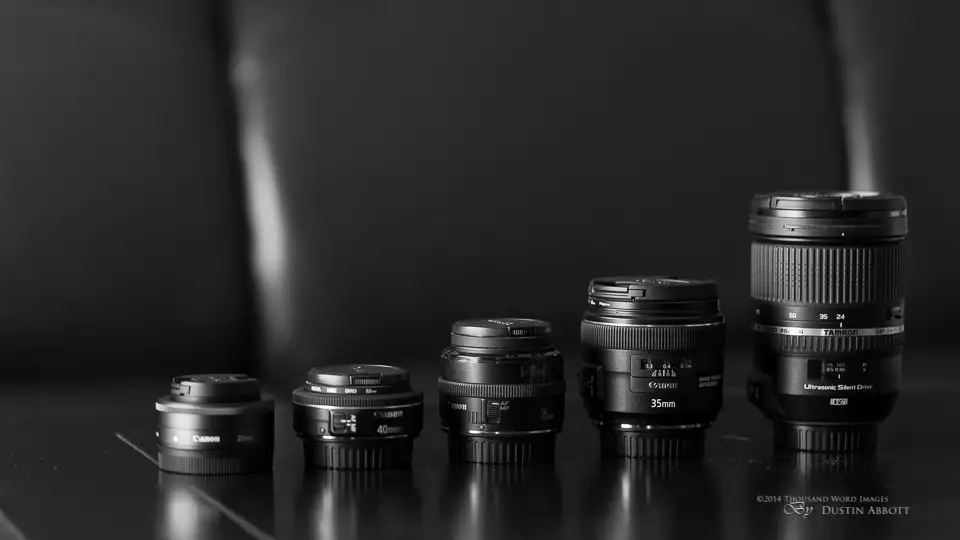 From left to right: EF-M 22mm f/2 STM, EF 40mm f/2.8, EF 35mm f/2, EF 35mm f/2 IS, Tamron 24-70mm f/2.8 VC
From left to right: EF-M 22mm f/2 STM, EF 40mm f/2.8, EF 35mm f/2, EF 35mm f/2 IS, Tamron 24-70mm f/2.8 VC
The lens has two switches on the side of the barrel. One is the AF/MF switch (though this lens does have true full time manual override and can be manually focused at any point.) The second is for the Image Stabilizer, and is an on/off switch. There is no panning switch as this is a newer generation hybrid IS system that automatically detects panning motion and turns off one axis of stabilization.
The lens also has a focus distance window. The final feature is the focus ring, which is about a half inch wide and has a nice rubber feel. The manual focusing ring is a bit more heavily damped than what I would like, but the action is smooth. I wouldn’t mind the ring being a little wider, but, in all fairness, there isn’t much room left on the lens for the focus ring to be wider, and it is a notable improvement in every way over its predecessor.
Another great positive for this little lens is a very significant maximum magnification figure (.24x), which is better than basically all the primes it is competing with. It can focus down to 9.4”, and that magnification comes in very, very handy. You will be able to take pictures with this lens that people will think were taken with a macro lens. Add an extension tube and you will quickly enter true macro territory. This is not something to be overlooked for those of you looking for a one lens solution. I find that maximum magnification is sometimes overlooked, but just know that this really adds to the versatility of the lens. At that distance you can throw just about any background completely out of focus and produce some very unique shots. Furthermore, I know there will be times that I won’t have a macro lens along, and this lens will do a credible job in those situations.
The lens seems tough and well made…but time will tell the tale. First impressions were good, and after several months of use in a lot of challenging weather, my impressions are still good. My copy says “Made in Japan” on it, and that still means something to me.
Why This Lens?
The old lens held an odd soft spot in my heart. It is a tiny little prime with a build only marginally better than the EF 50mm f/1.8II (which isn’t saying much). It does not feature a USM motor with full time manual focus but rather has a buzzy micromotor. It focuses reasonably quickly but not blazingly fast, and certainly not quietly. It has fairly massive amounts of chromatic aberrations and was not particularly sharp in the corners at wide apertures.
Confused yet?
What it did have was excellent center sharpness (a big deal for my typical style with wide aperture primes), focus accuracy, a very close minimum focus/large maximum magnification, and beautiful color rendering. All of this in a very small and compact package that was very easy to bring along. When stopped down it became a very sharp landscape lens. I eventually replaced it once I got the EF 40mm f/2.8 STM prime.
But what I missed was the unique magic that comes from a wide aperture prime.
I’m very happy to report that the new 35IS has filled that void very well. It improves upon its predecessor in just about every way. If you are in the market for a versatile prime lens in the 35mm focal length, then this new little Canon may just fit the bill for you. Furthermore, this lens will also double as a truly excellent “normal” lens if you are shooting a crop sensor body like Canon’s new 70D.
Optical Performance
The 35IS improves on the already excellent center sharpness of the older prime while expanding that optical goodness out towards the edges of the frame. It is sharper at equivalent apertures than the excellent 35L. In an absolute sense the Sigma 35 is sharper, but the level of sharpness throughout the frame on both lenses is so high that sharpness is not really a legitimate concern with either. If you are interested in chart testing, take a look at Photozone’s results here. If you want a real world example, take a look at the degree of detail from this crop of my son reading a birthday card. That is wide open, using only available light. Pretty amazing!
 Now look at the 100% crop…and you will see what I mean! (Also note the very nice defocused region in the foreground):
Now look at the 100% crop…and you will see what I mean! (Also note the very nice defocused region in the foreground):
While both the older and newer versions of this lens are marketed as f/2 primes, the new lens is considerably brighter, and has a t/stop (actual light transmission) of 2 that matches its marketed f/stop. According to DXO (which is a little obsessed with this kind of thing), that also helps close the gap a bit with the Sigma, as its light transmission is actually f/1.5. I should add that this isn’t a mark against the Sigma, as its tested T-stop performance is actually better than all of its f/1.4 rivals. The Samyang 35mm f/1.4 Wide-Angle US UMC Aspherical Lens, by comparison, has a T-stop of 1.8, which makes it barely brighter than this Canon f/2 that we are testing here. I only bring this up to comment on the fact that the older Canon f/2 prime has a T-stop of 2.3, which means that the newer lens lets in considerably more light. That adds to the overall picture of optical improvement here.
Vignetting will be visible wide open (around 2 stops in the corners), but honestly, these days vignetting can be corrected either in camera for JPEGS or in any RAW software so easily that this is hardly an issue. The newer lens has less vignetting than the older Canon lens and less wide open than the Sigma, although when the Sigma is stopped down to f/2 it exhibits better performance in this area than the 35IS. The performance in this area can only be described as “as expected”.
More important is the fact that the chromatic aberrations (green or purple fringing around areas of high contrast) are MUCH better controlled on this new lens than the old timer it replaces. That was my least favorite aspect of the older lens. I have not noticed CA in field use at all, even in high contrast scenes. The new optical formula and coatings have done the trick! The image below was shot directly into a winter sun so bright that I could scarcely compose the shot. This image has been toned in post, but no extra CA work removal has been done. The primary subject was ice-covered branches.
What really matters to me is that this lens is extremely useful wide open, which makes it great for portraiture (nice sharpness and delineation from backgrounds) and also for my event work, where it has a “look” that is a nice match for other excellent lenses like my EF 135mm f/2L or EF 100mm f/2.8L IS. This also opens up a lot of creative options when closer to objects to throw backgrounds out of focus while having great sharpness on the subject.
I have been consistently pleased with image quality I am getting from this lens. It has that special quality I was looking for.
Bokeh
This was the chief reason that ultimately bumped me in the direction of the Canon over the Sigma. I was not overly impressed with photos that I saw from the Sigma when it came to bokeh, particularly in the “transition zone”. The Sigma is incredibly sharp, but to my eye it seems like there is an imbalance between sharpness and “creaminess” in the defocused region. The scales are tipped a little too much in the favor of sharpness. As a result there are few images (to this point) that I have seen that really WOW me, and often those that are impressive to me tend to be stopped down, sharp landscape shots that have little to do with narrow DOF.
But I had the opposite reaction to the Canon. It seems more balanced to me. It, too, is very sharp, but the transition to defocus is very, very nice, particularly for a wide angle focal length. The transition is nicely smooth, and the out of focus bokeh highlights are far less “busy” than the old prime. This shot shows the nice bokeh as a “normal” lens on a crop sensor body:
The 35IS has 8 rounded aperture blades that allow circular highlights to retain their shape even when stopped down. Unlike other lenses in the class the highlights are essentially completely free of artifacts or concentric circles (onion bokeh). Bokeh highlights near the edge of the frame will show a slight bit of the “cat’s eye” shape, but unfortunately that is pretty common.
Here are few samples of “bokeh” shots, both with highlights and also showing the very nice transition from focus to defocus.
- Very smooth blurring of hard lines
- Nice transition bokeh
- Turkey bokeh?
- Soft defocus area
- Beautiful highlights
- Slight “cat-eye” effect
Autofocus
The 35IS got a major upgrade with the addition of the USM (Ultrasonic Motor) drive. This enables full time manual override (just grab the ring and focus) and also increases the speed while reducing the sound. The lens does focus quickly and others have reported it as being extremely quiet, but I find that I can hear the sound the elements shuffling as they move. I don’t know if this is specific to my copy, but I may explore the issue with Canon. It isn’t loud, but it isn’t my quietest lens, either.
Most importantly, the lens focuses very accurately. I am consistently pleased with the sharpness and consistently of focus. This is a lens that I shoot wide open a lot, so nailing focus when the depth of field is so shallow is extremely important. I was able to get highly repeatable results when doing AFMA on my bodies that have been equally consistent in the field.
Image Stabilization
This lens stands unique as the widest aperture lens currently available on the Canon system to include Image Stabilization (IS). It is, technically, the most “handholdable” lens you can get for the system, making it a truly excellent option for those interested in shooting video. Shooting at very low shutter speeds is possible (you could achieve a decent keeper rate at even close to 1 second with good technique). To be fair, however, there aren’t a tremendous amount of viable reasons to need that kind of shutter speed, but it does open both some creative options (when you want to contrast some minor movement with a static object, for example) but, more importantly, means that you almost never to worry about more useful shutter speeds (1/25th or 1/15th second) being affected by camera shake. Just remember that IS does nothing to your subject – a moving subject is still going to create motion blur at low shutter speeds. I was able to shoot this image handheld (at 1/10th of a second) very easily, which gave me the creative option of using the light from a parking lot spotlight to illuminate the falling snow and creating a very cool in-camera effect (I’ve only changed the color temperature to this image).
This application of Canon’s IS system automatically detects whether you are shooting normally or are using a panning technique and will adjust accordingly.It is an effective system, and in many ways helps make up for the nearly 1 stop advantage of its f/1.4 competitors in a far more compact package.
Is This Lens for You?
This is really where the “rubber meets the road”. In the Canon ecosystem there are several options for a 35mm prime:
- This lens – Canon EF 35mm f/2 IS USM Lens
- The more expensive big brother – the Canon EF 35mm f/1.4L USM Lens
- The new Sigma – 35mm f/1.4 DG HSM Lens
- Samyang/Rokinon 35mm f/1.4 Wide-Angle US UMC Aspherical Lens
- Several Zeiss options: 35mm F/1.4 Distagon T Lens or Distagon 35mm T* f/2 ZE Lens (manual focus only and very expensive – particularly the former).
By my count that is at least six options, not including the older Canon 35mm f/2 (now discontinued, but readily available used). The 35mm focal range is a very popular one. The least expensive option is the Samyang 35mm f/1.4 at just a little over $400. It is a manual only lens, which means that there are some applications that it will probably not work for. The same applies to the Zeiss options, although there are probably few people that are cross-shopping these lenses. The Zeiss optics are impressive, but they are both expensive and manual focus only.
Most shoppers will be considering the three options with AF, in this case the two Canons and the Sigma. The older design of the L lens is under serious attack from the newer Sigma, and if absolute sharpness is your goal, the Sigma is definitely your choice. The L lens has a beautiful rendering, however, that, in my mind, is more artistic and less clinical than the Sigma. It is the most expensive option of the three, but if you must have the red ring and that “L” look, the 35L is your choice. The Sigma is the middle option in terms of price and is a very nice lens – it is currently the popular choice in the segment. It is the new “little” Canon, however, that gets my vote, as I feel that it is a very nice balance between the two other options. It is very sharp, and yet the bokeh is nicely soft. It is (by far) the most compact of the choices in both absolute size and weight. If you want to do video work, the 35IS is definitely your choice. The fact that it is now the least expensive option of the three is an added bonus.
My research lead me to the Canon, and I haven’t been disappointed. To sum up:
Pros:
- Modern design and optics
- Very sharp
- Smooth bokeh – perhaps the best of the 35mm options
- Effective IS system
- Reasonably compact yet sturdy build
- Reasonable price (now)
- Great color rendering
- Chromatic aberrations well controlled
- Fast, accurate AF
- Close focus distance and high maximum magnification
Cons:
- Moderately high vignetting
- No inclusion of hood or case
- Maximum aperture of f/2 rather than f/1.4
- Not weather sealed
As you can see, there aren’t a whole of lot of real cons to the lens. The single biggest one was that it was initially overpriced, but a 35% price drop has nicely solved that problem. Every early reviewer was forced to conclude that this was a really nice lens whose single great caveat was its high price tag. It is really a shame that Canon overpriced the lens to begin with, as it seems like it never garnered much “buzz” and seems likely to be resigned to “hidden gem” status. Those who own it, however, seem to really love it. Count me amongst that group. This is a great lens that strikes a great optical balance. I look forward to using it in the more colorful seasons to come!
The Big Gallery: Click here to go to the Image Gallery for the Lens
You can watch the video review here:
[youtube=https://www.youtube.com/watch?v=sU2CGLEJOK0&list=UUrmU_ja6Ea7G1RYGfy3zeVA]
Gear Used:
EOS 6D DSLR Camera (Body Only)
EF 35mm f/2 IS USM Lens
EOS-M Mirrorless Digital Camera with EF-M 22mm f/2 STM Lens – Black
Recommend Reading:
Tamron SP 24-70mm f/2.8 Di VC USD review
Snap Art 4 Tutorial (featuring the 35mm IS)
Purchasing your gear through B&H and these links helps fund this website and keeps the articles coming. Thank you for your support.
[contact-form][contact-field label=’Name’ type=’name’ required=’1’/][contact-field label=’Email’ type=’email’ required=’1’/][contact-field label=’Website’ type=’url’/][contact-field label=’Comment’ type=’textarea’ required=’1’/][/contact-form]
DISCLAIMER: This article and description contains affiliate links, which means that if you click on one of the product links, I’ll receive a small commission. As an Amazon Associate I earn from qualifying purchases.
46 thoughts on “Canon EF 35mm f/2 IS USM Review”
Leave a Reply
You must be logged in to post a comment.









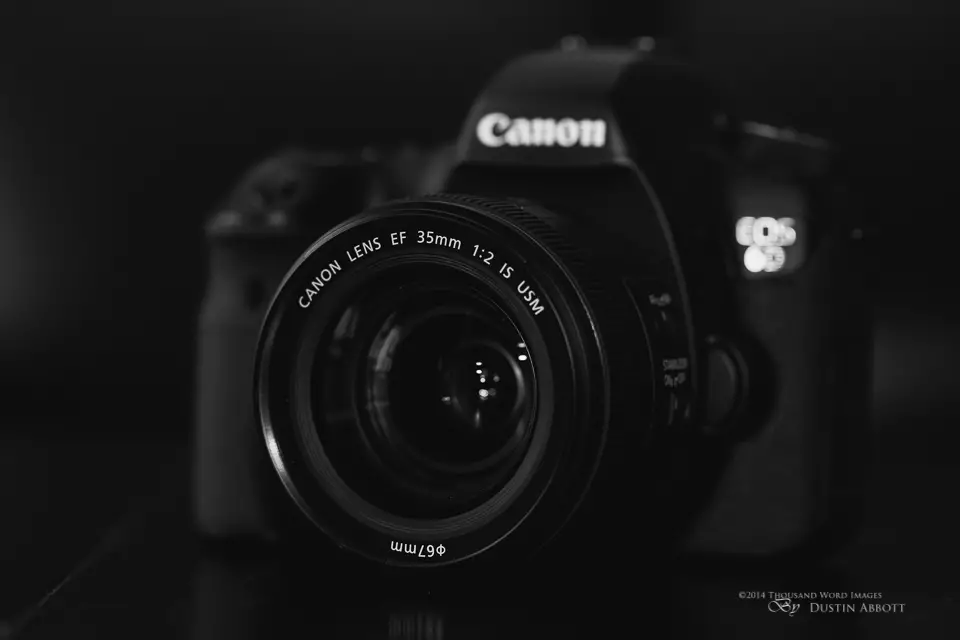




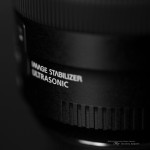

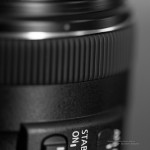













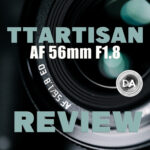 TTArtisan AF 56mm F1.8 X-mount Review
TTArtisan AF 56mm F1.8 X-mount Review  TTArtisan AF 56mm F1.8 Gallery
TTArtisan AF 56mm F1.8 Gallery  Canon EOS R8 Review
Canon EOS R8 Review  Fujinon XF 18-55mm F2.8-4 LM OIS 40MP 2024 Review
Fujinon XF 18-55mm F2.8-4 LM OIS 40MP 2024 Review 





One of the most down to earth, practical and useful lens reviews I've yet read. Like you I have the old-school 35 and love it despite its flaws, but now I see the 35 IS USM in my future. Thank you!
Thank you, Paul. I appreciate the nice feedback.
Tempted to buy based on your review! I have the 35L but the AF/MF selector switch detached from the lens altho' it still works, but Canon quoted over $300(!) to repair, so I didn't. What's holding me back is I already own the 28mm f/2.8 IS with which I am very pleased, so I don't know if there is enough difference here to justify the purchase.
I appreciate that you didn't just automatically go for the Sigma 35 Art which seems to be the fad with other reviewers. It would tempt me but for its lack of IS.
Rowland, that would be a tough call. I haven’t used the 28 mm lens, but I’ve heard nothing but good about it. I would choose the 35mm over it, but that’s not exactly what you were doing. If you are happy with what you already have, I think I would just stick with it.
Mate!! I never comment on things but this is one epic review!
You just solved 1 week of unnecessary stress about what lens to by.
Legend!!!
Glad to help. Enjoy the lens!
Dustin,
First of all, thanks for your awesome review of the Canon 35mm f/2 IS USM lens. I must have read this post at least 5 times before I decided to buy the lens myself.
After I bought the lens, I decided I wanted to create a photo project to really learn what it can and cannot do. So, I created the "35 Days of 35mm" project that turned into a real-world review of this lens.
I'd love to share it with you since your article played a big role in my decision to purchase this lens.
Here ya go! – http://bit.ly/146rA4Y
Thanks again!
Caleb, that’s an excellent review with a lot of great images in it. I review a lot of lenses these days, and the 35IS continues to stand out to me. One of the biggest deals is how accurate the AF. I never miss with the lens, and thus images are always very sharp. I think it may be one of the most accurate lenses I’ve used to date.
Hi!
Your photo of the snow is wonderful, is a master class shot!!
Thanks a lot!
great review ! I too also own the 35mm f/2 IS. I use it for infrared digital photography. you don't get that notorious hot spot in the infrared photos that certain canon lenses which have this hot spot issue . i have to be careful on what lenses i purchase. The canon 50mm f1.2L and the 1.4 both have the hot spot issue.but the nifty fifty 1.8 and 1.8II don't. i have the original 50mm 1.8.
That’s some feedback, Fred. This is a lens that has really continued to grow on me the more that I have used it.
Hi Dustin, it was a pleasure to read your review. I am currently thinking of buying a fast prime lens and the Canon 35mm f/2 is certainly one of my options. I was wondering if you have any experience with shooting forestscapes and/or astrophotos with this lens, since these would be the main type of pictures that I would like to shoot with such a lens. In both cases, sharpness and a bokeh quality are important for making the decision.
Thanks !
I certainly have used it a lot in the forest. I have other lenses that I use primarily for astraphotography, but I think it should do fine because it is very sharp wide open and has very little distortion. It is a lens that I like better and better the longer I use it. It is perhaps the most accurate lens (in AF consistency) that I have used. Very impressive!
Nice review .. Thanks
My pleasure
Thank you so very much for the comprehensive review of the f/2 IS. I was actually on a price watch list for the Sigma, but kept coming back to look again at the Canon. I read your review and realized that the Canon was precisely what I really needed – a fast, sharp, reliable travel/street lens. I bought it that day, and am completely satisfied with this awesome little lens.
Thanks again!
I’m really glad to hear that you like it. It’s a great lens.
I saw a link to this review of the 35IS on the Canon Rumors site several months ago, and after reading the review, I put the lens on my wish list.
I just picked up a refurbished copy on the Canon Direct store for about $100 less than its current new (with rebate) price. I look forward to its delivery, so I can put it through its paces.
Thanks again, Dustin!
Good for you, Jon. That is a great price. It’s a lens that continues to impress me. I also use it quite a bit for my video reviews.
Thanks for this fantastic review! Could you state the focus throw in degrees from longest to newrest end? Is the scale evenly divided or are the marks further away from each other the closer the focus distance is?
The focus throw seems to me to be about 160 degrees (or almost a full half rotation). The throw is spaced out fairly well from minimum to about two meters and then jumps pretty quickly to infinity. The challenge would be manually focusing between the 2 meter to roughly 4 meter mark at wide apertures. After that I’m sure infinity focus would be achieved. To be honest I have done next to no manual focusing with the lens for photos because it is so extremely accurate in autofocusing. I have used it with video, however, and don’t recall any issues.
I've been having an internal battle on which lens to buy – the Sigma 35mm F1.4 Art or the Canon 35mm F2 IS USM. Both have the same price brand new from where I'm currently based. I've read a lot of reviews on the two and have pretty much concluded that they have amazing image quality.
However, this is the only review I have read where it talks about that "magic" in the images captured with the F2 IS. Looking at the greats shots you've taken, there is indeed that "magic" you talked about. That helped a lot in my decision and I'm now saving up for the Canon 35mm F2 IS USM.
I’ve not regretted my choice to buy the Canon at all. The biggest reason is that it has amazingly accurate AF – the Sigma has had a number of people return it because of AF inconsistency.
Brilliant comparison! With all the hype surrounding the Sigma Art series I began scouting for a fast prime to complement my zoom arsenal and the 135L. The Sigmas are sleek and optically impressive, but as you are pointing out they do have AF-inconsistency and they are pretty big and heavy. This 35/2 IS seems like the real thing. You've captured some beautifully calm nature details there. Can't wait to try one! Thanks Dustin for sharing your experience and thoughts.
Goran, it is the real deal. It’s a great lens that I enjoy using every time I do.
Thanks for the down-to-earth approach, for example on the actual light transmission. I myself figured that 2/3rd of a stop difference between the f/1.4 and this f/2 was negligible, but couldn't find a review backing me up there.
Currently this is the lens I carry with me all the time, because it's light and great for street & travel. But I'm not sure yet whether this lens has its unique signature or character, like the 24mm f/1.4 and 50mm f/1.2 do have.
Roel, my pleasure. I know what you are saying about those other two lenses, but I have found the 35 IS has a great look in certain situations as well.
Very helpful. Now I want it. But I too have the 40mm. Since you picked up the 35 f/2, what became of your 40mm (banished to the bottom of a camera bag, sold, do you find a use for both lenses)? I am wondering if you view the 35mm as complimentary or an upgrade to the 40mm?
I’m afraid it is mostly banished to the bottom of the bag. I mostly take it along if I going out hiking with a long telephoto as a “just in case” I want a wider perspective. If I were you I’d probably sell it to help fund the 35IS purchase.
Great review! It helps me to decide whether or not I should add this lovely lens to my collection. I am however still deciding if I should get this lens, simply because I have other lenses may cover this focal length as well as DOF.
My current gears:
5dmk3
16-35 f4 is (covers 35)
50 1.8 stm (covers DOF)
100 2
200 2.8
Great real world review, i have the older 35 f2 which i love, but i think i may have to trade up to this beauty. I have the 24mm f2.8 is usm and this is a perfect stablemate. by the way the snow shot is excellent, very Van Gogh!
It would be a very nice pairing with the 24mm f/2.8. These are great lenses at reasonable prices.
Hi Dustin,
Thank you for the great review.
How would you compare the image quality (sharpness, contrast, colors) of this lens with the Tamron 24-70mm 2.8 and the 40mm 2.8? At an event, would you feel comfortable shooting wide open or would you go up to at least 2.8? If you already had a large zoom in your bag, which of the three would you go for? Would you hesitate to take the 35mm (or the 40mm) and leave the Tamron behind and if so why?
Marek – that depends on what large zoom you are talking about. If I am going out with the 100-400L II and don’t think I’ll use it much, I’ll bring the 40 because you can put it in a pocket. If I am shooting portraits, I will often bring the 35, if I am shooting events and want ultimate versatility, I use the Tamron 24-70. I use the Tamron a lot when traveling, too. I shot the 35 at f/2 unless I need more depth of field. It is essentially perfectly sharp wide open.
Very good review! I have to admit, 35mm f/1.4L is one of my dream lenses, but in reality, I can only effort the optimum lens for me: this 35mm f/2.0 IS. I know, it has all the picture quality, it should have. I am not interested in perfection, but in good feel, contrast, smoothness and bokeh rendering, to make me smile.
Thank you once more for sharing your experience with us, Dustin!
Great review! I'm thinking of buying an 35mm lens for my full frame camera. Recently I bought the Canon EF 100mm f2.8 L and I already have the EF 17-40L, EF 24mm f2.8 and 50mm f2.5 compact macro.
I'm not quite sure if I really "need" a 35mm prime, just because the 17-40mm includes 35mm and I have a 24mm and 50mm lens.
The EF 35mm f2 IS USM would be very nice, f2 is a fast aperture for me, the image stabilisation is really cool and it is not sooo expensive.
Hmm,I'll see.
This is a fantastic review! I was struggling between S35 F1.4 and EF 35mm F2 IS USM. By seeing all the AF challenges (especially in the low light environment) people have with Sigma, I decided to buy the Canon one. We were able to shoot in the birthday party of my son and conducted the video recording. Guess what…the IS worked perfectly and my friend’s Sigma really had the challenges on video (well…to hold a heavy lens like S35 with 5D3 in low light is definitely a challenge. I don’t blame my friend). Another scenario I had last week is to shoot in the museum which the tripod is forbidden to bring in. Then IS plus F2 worked perfectly in such a low light environment. Thank you Dustin for the great advice. This review has provided lots of great info and really helped me to make the decision.
Michael, you are welcome. The 35 IS punches above its weight in a number of ways and really is a delight to use.